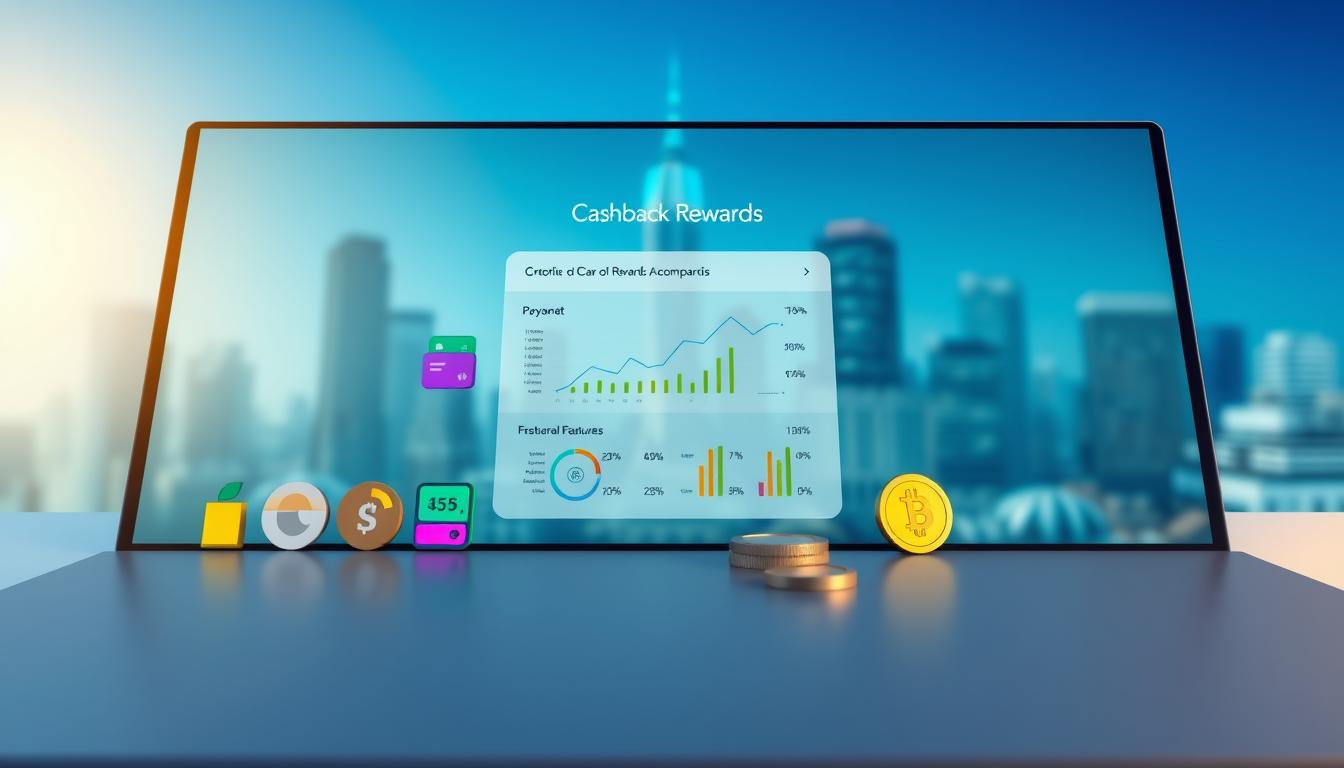Now Reading: Discover Top Passive Crypto Income Rewards Programs
- 01
Discover Top Passive Crypto Income Rewards Programs
Discover Top Passive Crypto Income Rewards Programs

Cryptocurrencies offer more than trading. Investors use staking, lending, liquidity pools, masternodes, NFT royalties, and exchange interest to earn without daily trades.
Some methods like staking and exchange interest give steady yields—large-cap proof-of-stake assets often range near 4% to 5%. DeFi tactics such as yield farming can pay more, but they bring higher volatility and upkeep.
Platform choice matters: availability varies by U.S. state and some exchanges issue 1099-MISC for payouts above $600. Security, fees, and token price swings shape actual returns.
This guide compares risk, liquidity, and maintenance so users can match strategies to goals. You’ll see examples from Coinbase, Kraken, Aave, Compound, Uniswap, SushiSwap, and Balancer, plus U.S.-specific tax and regulatory notes.
Why investors are turning to crypto for passive income right now
Investors are shifting capital into digital-asset yields as traditional savings rates settle lower. Many exchanges now offer interest on stablecoins such as USDC, making it simple to earn without selling holdings via platforms like Coinbase and Kraken.
Staking on major networks (ETH, SOL, ADA) typically pays about 4%–5% annually. That yield profile attracts those seeking steady returns while keeping exposure to cryptographic assets.
The move reflects several market factors. Volatility and token cycles can boost or erase short-term gains. Network participation, validator behavior, and fee markets also change real-world performance versus advertised APYs.
User-friendly exchanges lowered the barrier to entry. DeFi routes offer higher potential yield but demand more skill and carry smart-contract risk. Regulators have increased scrutiny of staking-as-a-service, and U.S. platforms may issue a 1099-MISC for payouts over $600.
Tip: Compare yield to bank rates and dividends on a risk-adjusted basis, track platform disclosures, and match allocation to liquidity needs, tax exposure, and time horizon.
Best passive crypto income rewards programs
Compare access, yield, and risk across custodial venues and DeFi so you can choose what fits your goals. Below are core choices U.S. users commonly consider.

Staking platforms with reliable access
Gemini, KuCoin, Coinbase, and Binance.US offer straightforward staking for ETH, SOL, and ADA. Typical staking yields sit near 4%–5% on large networks. Staking rewards usually accrue automatically, but check lock-ups and minimums per asset.
Exchange interest and savings
Holding USDC on Coinbase or Kraken can earn regular interest payments with high liquidity. These accounts remove custody complexity but may produce a 1099-MISC for U.S. users above $600.
DeFi lending vs. centralized lenders
Aave and Compound give transparent, permissionless lending markets. Centralized lenders offer simpler UX but carry counterparty and bankruptcy risk, as past failures show.
Liquidity pools and yield strategies
Uniswap, SushiSwap, and Balancer generate trading fees and extra token incentives. Higher APYs from yield farming exist, yet smart contract risk, token emissions, and impermanent loss can reduce net gains.
| Option | Typical Yield | Custody | Main Risks |
|---|---|---|---|
| Staking (Gemini, Coinbase) | ~4%–5% | Custodial | Lock-ups, exchange risk |
| Exchange interest (USDC) | Variable (stable) | Custodial | Counterparty, tax reporting |
| DeFi lending (Aave, Compound) | Variable, market-driven | Non-custodial | Smart contract exploits |
| Liquidity pools (Uniswap) | Fees + incentives | Non-custodial | Impermanent loss, gas |
Other routes: masternodes (DASH, PIVX, Zcoin) need collateral and upkeep. Dividend tokens (KCS, NEO/GAS, VET/VTHO) distribute protocol fees. Cloud mining trades accessibility for lower net returns, while hardware mining requires capital and maintenance. NFT royalties, play-to-earn, and affiliate earnings can add diversity but vary in liquidity.
Selection tip: vet platforms, confirm fee transparency, and match asset choice to your time horizon and risk tolerance.
Staking essentials: platforms, yields, lock-ups, and risks
Staking lets token holders secure networks while earning steady annual yields on assets like ETH, SOL, and ADA.
Proof-of-stake works by assigning validation rights to stakers or validators. Validators run nodes; delegators pick validators through a crypto wallet or custodial provider. The network rewards uptime and correct behavior; misbehavior can trigger slashing.
How it works across ETH, SOL, ADA and typical annual rewards
Ethereum, Solana, and Cardano use slightly different math to calculate staking rewards. Typical ranges for these large tokens sit near 4%–5% annually.
On Ethereum (stemming from ethereum 2.0 upgrades) withdrawals and exit queues affect liquidity. Solana and Cardano have faster unstake windows but different minimums and redelegation rules.
Top U.S.-accessible platforms and availability by state
Major exchanges — Coinbase, Binance.US, Gemini, and KuCoin — offer staking services, though availability and terms vary by state. Check each platform’s disclosures and tax reporting, since exchanges may issue 1099-MISC above $600.
Lock-up periods, liquidity trade-offs, and network performance factors
Lock-up and unbonding times affect your ability to react to market moves. Longer unbonding raises opportunity cost.
Performance drivers include validator uptime, network participation rate, and fee market dynamics that shape realized returns.
Security, storage, and exchange risk when staking
Choose between using a non-custodial wallet to delegate or staking via exchanges. A hardware wallet keeps seed phrases offline, while custodial staking trades control for simplicity.
Watch for platform fees and counterparty risk, and vet insurance and smart-contract audits for liquid staking tokens.
| Option | Typical Yield | Lock-up |
|---|---|---|
| ETH (validators/delegation) | ~4%–5% | Variable, exit queue |
| SOL | ~4%–5% | Shorter unbonding |
| ADA | ~4%–5% | Flexible delegation |

Quick setup tips: verify minimum stake amounts, pick reputable validators, monitor delegations, and safeguard seed phrases in a secure wallet.
Crypto lending and interest: predictable income with platform risk
Earning interest by lending tokens depends mostly on borrower demand and how much of an asset sits in a market.
Where returns come from: Lenders earn yield when borrowers draw liquidity. Utilization rates, dynamic interest curves, and collateral types set the interest payments lenders receive.

Centralized vs. decentralized: trade-offs for users
Centralized platforms give simple UX and posted rates but carry counterparty risk and rehypothecation concerns. DeFi protocols like Aave and Compound offer transparent accrual to your supplied balance and self-custody, yet they expose users to smart contract exploits.
Getting started with Aave or Compound
- Connect a wallet and approve tokens.
- Supply assets and watch underlying rates and utilization.
- Understand collateral factors, borrow limits, and liquidation thresholds.
| Aspect | Centralized | DeFi |
|---|---|---|
| Liquidity | Often higher | Depends on pools |
| Transparency | Limited | On-chain |
| Risk | Insolvency | Smart contract |
Watch fees like gas and protocol charges. Review audits, insurance pools, and bug bounties as security signals. Track utilization and rate changes, and consult tax guidance—U.S. platforms may issue a 1099-MISC for sizable earnings.
For protocol options and deeper DeFi guidance, see the best DeFi lending protocols.
Yield farming and liquidity pools: chasing higher APY with due diligence
Yield farming combines multiple protocols to chase higher APYs, but it requires active monitoring and clear rules for entry and exit.

Automated market makers like Uniswap, SushiSwap, and Balancer let liquidity providers earn trading fees and token incentives. AMMs price assets using pools; LPs deposit paired tokens and receive LP tokens that track their share.
Understanding incentives, fees, and impermanent loss
Incentives can boost headline yield through emissions and extra tokens, but those emissions create sell pressure that lowers net returns.
Impermanent loss happens when token prices diverge. Even if trading fees offset some loss, sharp volatility can make holding the underlying assets more profitable than providing liquidity.
Selecting pools and timing rotations to optimize net yield
Pick pools with steady volume, deep liquidity, audited contracts, and sustainable emissions schedules.
- Watch trading fees vs. volatility—high fees help in volatile markets but gas can eat small gains.
- Rotate into stable pairs during turmoil to reduce impermanent loss and slippage.
- Factor vesting and lock-ups; short-term incentives may not translate to long-term performance.
| Factor | What to check | Why it matters |
|---|---|---|
| Volume & depth | High 24h volume, low spread | More trading fees, less price impact on exits |
| Token risk | Audit status, team, tokenomics | Emissions and rug risk affect returns |
| Fees | Trading fees, gas, protocol cut | Reduces net yield, especially for small positions |
| Performance monitoring | Dashboards, oracles, TVL trends | Signals when to harvest, auto-compound, or exit |
Checklist for users: size positions to limit slippage, set acceptable slippage on trades, use audited pools, and plan staggered exits to avoid market impact.
For step-by-step strategies and deeper tactics, see our yield farming guide.
How to pick a passive income crypto platform
Not all platforms are equal — vetting them saves time and risk.
Reputation and security
Prioritize platforms with third-party audits, clear custody models, and transparent incident reporting.
Look for insurance disclosures and a public hack history before you deposit funds.
Availability and customer support
Confirm availability in your U.S. state and check support channels for fast problem resolution.
Good platforms publish clear terms, phone or chat support, and user guides for common issues.
Fees, rates and educational resources
Compare fee structures, minimums, lock-ups, and how often rates are paid.
Evaluate educational material so users can learn how staking, lending, or savings options work.
Centralized vs. decentralized experience
Decide if you want the convenience of exchanges or hands-on control with self-custody and a wallet.
Match platform choice to your skill level, investment horizon, and need for 24/7 access.
| Factor | What to check | Why it matters |
|---|---|---|
| Security | Audits, insurance, proof-of-reserves | Reduces hack and insolvency risk |
| Availability | State support, asset listings | Affects what coins and features you can use |
| Fees & rates | Trading fees, distribution cadence | Drives net returns |
| Support & education | Guides, helpdesk, onboarding | Shortens learning curve for users |
Final tip: weigh these factors against your investment goals and tolerance for hands-on management.
Tax, fees, and U.S. regulations: what affects your net returns
Taxes and platform charges can cut into what you actually keep from token activity. In the U.S., digital assets are property, so distributions are generally taxed as ordinary income when received and as capital gains or losses when sold.
Note: many exchanges like Coinbase, Binance.US, Gemini, and Crypto.com issue a 1099-MISC for payments over $600, which helps users track reportable events. For IRS guidance, see the page on report crypto transactions.
Bankruptcy and counterparty risk
Centralized lenders have failed in recent years, illustrating how customer claims can be delayed or reduced in insolvency. Vet custody arrangements and platform disclosures before depositing funds.
Smart contract exploits and mitigation in DeFi
DeFi exposes users to code risk. Audits, bug bounties, and insurance pools help, but they are not guarantees. Limit exposure and prefer audited protocols with transparent reserves.
| Area | Centralized | DeFi / On-chain |
|---|---|---|
| Tax reporting | Often issues 1099-MISC | User must track receipts and disposals |
| Main risk | Counterparty, bankruptcy | Smart contract exploits |
| Mitigations | Insurance disclosure, audits | Audits, bug bounties, insurance funds |
| Costs | Platform fees, possible custodial cuts | Gas, protocol fees |
Track fees, gas, and net proceeds carefully. Keep detailed records of distributions, fees paid, and disposals, and consult a tax professional for complex cases. Good security hygiene—hardware wallets, MFA, and cautious approvals—reduces on-chain and custodial risk.
Strategies to maximize passive income without overexposing your portfolio
A disciplined plan can raise yields while keeping your portfolio risk in check. Start by mapping how much capital you want to allocate to earning strategies and set clear allocation bands for each method.
Diversify across methods — split funds among staking, exchange interest, lending, and liquidity pools. Balance stable assets with higher-volatility coins to limit drawdowns and preserve buying power.
Compound, rebalance, and mind fees
Reinvest interest and rewards on a cadence that makes sense after accounting for gas and trading fees. Small positions can be wiped out by high fees, so batch transactions or use exchange interest for automation.
Set rebalancing rules and stick to them. Periodic rebalancing locks gains, restores target weights, and reduces tail risk when markets move fast.
- Prioritize high-liquidity pairs to reduce slippage.
- Use separate wallets for long-term holdings and active positions to limit approvals.
- Track rates across platforms and automate capture only within your risk limits.
Stress test allocations for fee spikes and liquidity crunches, monitor protocol health (TVL, audits, governance), and scale positions using a tiered approach. Document the process so your plan for generating passive income stays consistent and reviewable.
For a practical start, see guidance on how to earn passive income for automation tips and examples.
Your next steps to start generating passive crypto income
Small, deliberate steps will help you validate setup, fees, and actual yields before scaling positions.
Pick one method to start — exchange savings (USDC on Coinbase or Kraken), staking (Gemini, Coinbase, Binance.US), lending (Aave, Compound), or liquidity on Uniswap/SushiSwap/Balancer. Match that choice to your risk budget and timeline.
Set up a secure wallet and exchange accounts, complete verification, and enable multi-factor authentication. Use a hardware wallet for long-term holdings and a separate wallet for active positions.
Begin small. Measure effective rates after fees, confirm how staking rewards and interest accrue, and test withdrawal or unbonding steps. Keep records for tax reporting; many U.S. platforms may send a 1099-MISC for reportable amounts.
Review platforms and rates monthly, automate compounding when it is cost-effective, and scale only as you gain confidence. Maintain emergency liquidity and avoid overexposure to any single token or platform.
FAQ
What are the main ways to earn recurring payments from cryptocurrency assets?
You can earn recurring payments by staking proof-of-stake tokens (Ethereum, Solana, Cardano), supplying assets to lending platforms like Aave or Compound, providing liquidity on DEXs such as Uniswap or SushiSwap, running masternodes for networks like DASH, collecting dividend-style token payouts (KuCoin Shares, NEO/GAS), or using exchange savings accounts that pay interest on stablecoins like USDC. Each method balances yield, liquidity, and operational complexity.
How does staking differ from lending on centralized exchanges?
Staking locks or delegates tokens to secure a network and earn protocol-level rewards; validators and delegators share block rewards. Lending on centralized exchanges or platforms involves depositing assets that are lent to borrowers in return for interest. Staking ties rewards to network performance and can have lock-up periods; lending yields depend on borrower demand and platform risk.
Are yields shown by platforms the same as net returns?
No. Advertised annual yields often exclude fees, impermanent loss (for liquidity providers), trading costs, and tax obligations. Net return equals gross yield minus platform fees, gas or transaction fees, slippage, and any losses from market movement. Always estimate real costs before committing funds.
What risks should I consider when using DeFi protocols like Aave or Compound?
Key risks include smart contract bugs, oracle manipulation, liquidation risk if collateral falls in value, and potential governance attacks. Audits reduce but don’t eliminate risk. Use well-audited protocols, diversify exposure, and avoid overleveraging to limit losses.
How do liquidity pools create earnings and what is impermanent loss?
Liquidity providers deposit token pairs into automated market maker pools and earn trading fees plus possible incentive tokens. Impermanent loss happens when one token’s price changes relative to the other, reducing value versus simply holding both assets. Fee income and incentives can offset this, but it requires monitoring and pool selection.
Which U.S.-accessible platforms are known for safe staking and interest accounts?
Reputable options for U.S. users include Coinbase, Gemini, Kraken, and Binance.US for staking or interest-like products, each with varying availability by state. Confirm your state’s access, custody model, and whether the platform provides insurance or third-party audits before depositing.
What lock-up periods and liquidity trade-offs come with staking?
Lock-up times vary by network and provider. Ethereum 2.0 and some proof-of-stake chains may require unstaking windows of days to weeks. Centralized platforms sometimes offer liquid staking derivatives to improve flexibility but may introduce counterparty risk. Longer lock-ups typically offer higher nominal yields but reduce access to funds.
How are payouts taxed in the U.S. when I receive token-based earnings?
The IRS treats many token distributions as taxable income at receipt, valued at fair market value in USD. Later sales or swaps may trigger capital gains or losses. Some exchanges issue 1099forms; keep detailed records of timestamps, USD values, and the nature of each distribution for filing.
What security best practices should investors follow when using exchange products or wallets?
Use hardware wallets for self-custody where possible, enable strong two-factor authentication on exchanges, vet platforms for audits and insurance, and avoid sharing private keys. Limit exposure to any single counterparty and use smaller allocations for experimental yield strategies.
How can I choose between centralized platforms and DeFi for earning returns?
Centralized platforms offer simpler interfaces, fiat rails, and custodial insurance options, but they carry counterparty and bankruptcy risk. DeFi provides noncustodial control and often higher yields, at the cost of smarter-contract and operational complexity. Match the choice to your technical comfort, regulatory exposure, and risk tolerance.
Are masternodes and mining still viable ways to generate ongoing payout streams?
Masternodes can pay steady rewards for certain governance tokens but require significant upfront collateral and technical upkeep. Cloud or hardware mining yields depend on electricity costs, hardware efficiency, and coin prices; mining can be profitable but is capital intensive and sensitive to market cycles.
What role do fees and network performance play in yield strategies?
Transaction fees (gas), exchange commissions, and platform withdrawal fees directly reduce net returns. Network congestion raises costs for repeated compounding or rebalancing. Consider low-fee chains or layer-2 solutions, and factor expected transaction costs into strategy planning.
How should I diversify to protect earnings and limit exposure?
Spread funds across methods (staking, lending, liquidity provision), stable assets and growth tokens, and multiple trusted platforms. Rebalance periodically, compound earnings prudently, and cap allocations to any single counterparty or protocol to reduce single-point failures.
What due diligence should I perform before joining a new yield opportunity?
Check audit reports, review the development team and community activity, examine tokenomics and reward sources, test small deposits first, and research past security incidents. Look for transparent governance, solid liquidity, and clear mechanisms for reward distribution.
Can NFT royalties, play-to-earn titles, or affiliate programs supplement platform-based earnings?
Yes. NFT royalties and gaming tokens offer alternative streams but carry high volatility and product risk. Affiliate programs and creator royalties can generate steady fees if demand persists. Treat these options as complementary to core strategies, not guaranteed income sources.
How do I start with a low-risk approach to generate recurring payments?
Begin with well-known exchanges or regulated platforms that offer stablecoin yields and custodial staking. Keep allocations modest, use hardware wallets for cold storage of longer-term holdings, and document all transactions for tax purposes. Gradually test DeFi strategies once you gain experience.















